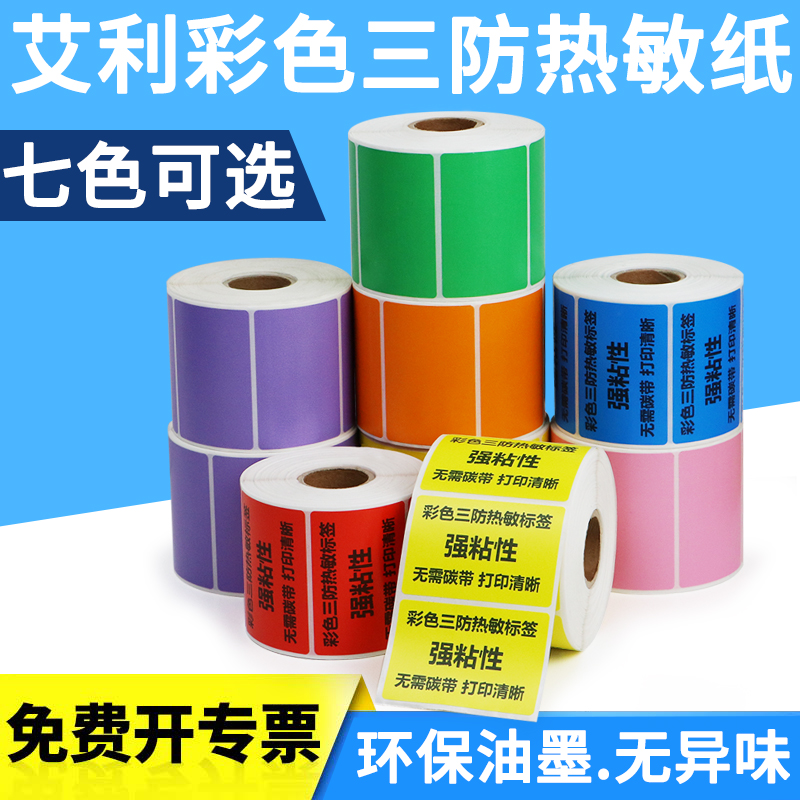办公好帮手——条码标签纸的种类与用途
尕枯非生
2024-11-09 17:52:46
0次
办公好帮手——条码标签纸的种类与用途
在现代化的办公环境中,条码标签纸已成为一种必不可少的办公好帮手。无论是在库存管理、产品标识、资产管理或是任何需要识别和跟踪的地方,条码标签纸都扮演着至关重要的角色。这篇文章将深入探讨条码标签纸的种类及其在办公环境中的各种用途。
一、条码标签纸的种类
1. 纸质标签:纸质标签是最常见的条码标签类型,由于其成本低廉,印刷方便,因此在许多办公环境中被广泛使用。
2. 聚酯(PET)标签:聚酯标签具有较好的耐久性和抗化学性,常用于室外环境或需要抵抗恶劣环境的场合。
3. 铜版纸标签:铜版纸标签具有优异的打印效果和较高的抗刮性,常用于高端产品或需要高清晰度打印的场合。
4. 热敏纸标签:热敏纸标签适合于打印条形码和二维码,由于具有快速打印和良好的打印效果,被广泛应用于零售、医疗、物流等行业。
二、条码标签纸的用途
1. 库存管理:条码标签纸用于为物品编号,可以有效地进行库存管理。在货物的进出库过程中,只需扫描条码标签即可完成对物品的识别和追踪,大大提高了工作效率。
2. 产品标识:通过在产品上打印条码或二维码,可以快速识别产品的信息,如生产日期、保质期、生产批次等。这有助于企业进行产品质量管理和追溯。
3. 资产管理:在企业的资产管理中,通过使用条码标签纸对资产进行编号和标识,可以方便地追踪资产的位置和使用情况,有助于提高资产的使用效率和减少资产损失。
4. 物流与供应链管理:在物流和供应链管理中,条码标签纸用于标识货物的信息,如订单号、发货地、收货地等。这有助于实现货物的快速识别和追踪,提高物流效率。
5. 医疗行业:在医疗行业中,条码标签纸被广泛应用于病人信息管理、药品追溯、医疗器械标识等方面。通过使用条码标签纸,医疗行业可以实现更高效的病人管理和更精确的药品追溯。
6. 零售业:在零售业中,条码标签纸常被用于商品的标识和管理。通过扫描商品的条码,可以快速完成商品的结账和计价,提高零售效率。
三、总结
总的来说,条码标签纸作为一种现代化的办公好帮手,其种类繁多且各具特色,用途广泛。在办公环境中,使用条码标签纸可以大大提高工作效率和管理水平,减少错误和损失。无论是库存管理、资产管理、物流管理还是其他任何需要识别和跟踪的场合,条码标签纸都能发挥其独特的作用。因此,选择合适的条码标签纸对于提高办公效率和质量具有重要意义。
Office Helper - Types and Uses of Barcode Label Paper In the modern office environment, barcode label paper has become an indispensable office helper. Whether it's inventory management, product identification, asset management, or any other place that requires identification and tracking, barcode label paper plays a crucial role. This article will delve into the types of barcode label paper and their various uses in the office environment. Types of Barcode Label Paper 1. Paper labels: Paper labels are the most common type of barcode labels, as they are inexpensive and easy to print. They are widely used in many office environments. 2. Polyester (PET) labels: Polyester labels have excellent durability and chemical resistance, making them ideal for outdoor environments or other harsh conditions. 3. Copperplate paper labels: Copperplate paper labels offer excellent printing results and high scratch resistance, making them suitable for high-end products or occasions that require high-resolution printing. 4. Thermal paper labels: Thermal paper labels are suitable for printing barcodes and QR codes, as they offer fast printing and good printing results. They are widely used in retail, medical, logistics, and other industries. Uses of Barcode Label Paper1. Inventory Management: Barcode label paper is used to number items, effectively managing inventory. By scanning the barcode label, the identification and tracking of items can be completed during the process of goods in and out of the warehouse, greatly improving work efficiency.
2. Product Identification: By printing barcodes or QR codes on products, information such as production date, shelf life, and production batch can be quickly identified. This helps companies manage product quality and traceability. 3. Asset Management: In enterprise asset management, barcode label paper is used to number and identify assets, making it easy to track asset location and usage. This helps improve asset utilization and reduce asset loss. 4. Logistics and Supply Chain Management: In logistics and supply chain management下一篇:条码标签纸的多样化应用与打印技巧
相关内容
热门资讯
揭秘条码标签纸:功能、特点及适...
条码标签纸是一种用于打印条形码和二维码的纸质材料,广泛应用于零售、物流、医疗、制造等行业,具有耐用、...
解锁条码标签纸的多样应用场景
条码标签纸具有广泛的应用场景和价值,可应用于零售、物流、医疗、生产制造等多个行业,实现快速识别、管理...
条码标签纸:办公耗材中的必备利...
条码标签纸是办公耗材中不可或缺的利器,适用于多领域,可快速准确记录和识别信息,提高效率和数据安全性,...
提升效率:条码标签纸在办公流程...
条码标签纸在办公流程中扮演重要角色,能自动化追踪、快速识别分类、减少错误率、管理库存、增强可读性、适...
条码标签纸的选购指南:提升办公...
选购条码标签纸需明确需求,考虑材质、尺寸、粘性、抗污性和兼容性等因素,选择知名品牌和合适价格,并注意...
解析条码标签纸:如何成为现代办...
条码标签纸在办公中,快速、准确管理物品信息。选材合理,设备解析迅速,配合软件可高效管理物品信息,并培...
探索条码标签纸的多样化用途与优...
条码标签纸在零售、物流、资产管理、医疗保健和工业制造等领域具有多样化用途,其优势包括高效性、准确性、...
选购指南:如何选择适合你的条码...
选购条码标签纸需考虑使用环境、条码类型、标签尺寸形状、材质、成本效益及品牌质量。选择适合的标签纸能提...
条码标签纸的印制技术及优势分析
文章摘要:本文介绍了条码标签纸的印制技术,包括印刷、涂层处理和条码打印等环节,并分析了其高质、耐用、...
办公室中的小助手:条码标签纸的...
条码标签纸是办公室中的小助手,可进行物品标识、资产管理、库存管理、快递与邮件管理及会议活动标识,提高...



